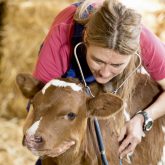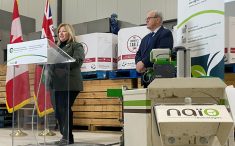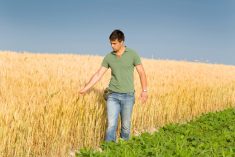Northern Ontario is a vast region that contains “many locales (that) can be considered a food deserts” despite growing production in the area, a new University of Guelph report says.
The report was prepared by a team from the university’s School of Environmental Design and Rural Development, led by Dr. Wayne Caldwell. It was released in early September.
Why it matters: Land is being reclaimed for agriculture in the north, but will it help food distribution issues there?
Read Also

Ontario’s agri-food sector sets sights on future with Agri-Food 2050 initiative
The first-ever Agri Food 2050, a one-day industry event dedicated to envisioning the future of food and farming in Ontario,…
The report highlights food producers currently in the north that have had success marketing to local consumers and offers some suggestions on how to create better local food systems.
It likely comes as little surprise that northern Ontario is home to the largest maple syrup producer in the province, as well as more output of farmed rainbow trout than the rest of Canada combined. But the report also highlights a beef sector “that’s equivalent in size to that of New Brunswick,” and points to enhancements in crop yield and range of viable farming options due to already-occurring or predicted future changes in climate.
Caldwell says the report was created using interviews and then circulated to numerous groups and individuals, as well as a project involving students from the French-language, three-site Université de Hearst.
The authors credit existing government efforts to support the region’s farmers. These include a 2016 Ontario Ministry of Agriculture, Food and Rural Affairs (OMAFRA) discussion paper, which eventually led to the creation of the “Northern Ontario Agri-Food Strategy.” That document outlines five strategic directions to drive growth:
- Fostering a culture of innovation;
- Strengthening primary agriculture and aquaculture production;
- Strengthening food processing;
- Increasing consumption of food produced in the north;
- Promoting the involvement of Indigenous people and communities in agri-food sector development.
There was also the announcement in April this year that the provincially funded Northern Ontario Heritage Fund Corp. will invest $15.6 million in 27 agricultural projects, ranging from studies aimed at supporting the sector, land clearing and tile drainage, and agricultural facility expansion. And the Northern Livestock Pilot project is a recently announced partnership involving OMAFRA, Beef Farmers of Ontario, and a number of local municipalities.
Much of the report’s spotlight for current efforts shines on farmers and farm-related organizations, which have successfully made connections with consumers in spite of the challenges thrown up by northern Ontario’s geography and economic realities.
The Cloverbelt Local Food Co-op (CLFC) is the first online farmers’ market in northwestern Ontario. Producers list products available for purchase and consumers can purchase local food of their choosing. That is different from a traditional seasonal food box over which consumers have little control.
CLFC has a central hub in Dryden, at which orders are taken and food collected for distribution to far-flung communities like Sioux Lookout, Kenora, Fort Frances, and Red Lake.
One of the keys to the co-op’s success has been the development of agreements and partnerships with local food service wholesalers, who assist in the distribution of food to their expanding service area.
Nine other farms or businesses are highlighted ranging from the relatively new Fromagerie Kapuskoise cheesemaker in Kapuskasing to Bison du Nord in Temiskaming Shores, which began in 1972 and has since grown into the largest bison herd in Eastern Canada. The North Bay Farmers’ Market is given credit for its efforts to promote local food, as is the Old Order Mennonite-initiated Algoma Produce Auction, which, since 2016, has been running twice per week from July through October in a new building in Desbarats, and is open to the public.
Distance is definitely the most daunting challenge, and innovations to overcome the region’s short growing season are also highlighted.
Suggested actions for municipal governments range from local food production mapping, to creating an Agricultural Advisory Committee, and building agricultural knowledge among municipal staff.
Information about the case studies and current activities, as well as the newly published Municipal Toolkit, can be viewed online at enhancinglocalfood.com.















